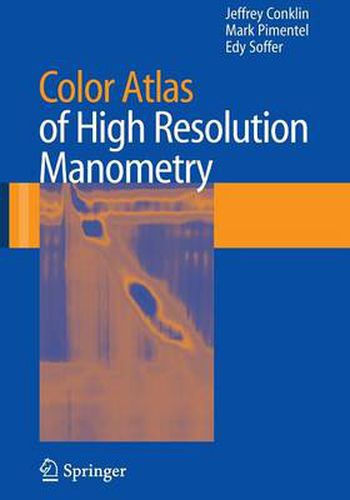Readings Newsletter
Become a Readings Member to make your shopping experience even easier.
Sign in or sign up for free!
You’re not far away from qualifying for FREE standard shipping within Australia
You’ve qualified for FREE standard shipping within Australia
The cart is loading…






This title is printed to order. This book may have been self-published. If so, we cannot guarantee the quality of the content. In the main most books will have gone through the editing process however some may not. We therefore suggest that you be aware of this before ordering this book. If in doubt check either the author or publisher’s details as we are unable to accept any returns unless they are faulty. Please contact us if you have any questions.
While reflux disease, achalasia, esophageal spasm, gastroparesis and IBS include some of the most common disorders in all disease categories, the understanding of their pathophysiology has remained elusive. The field of clinical gastrointestinal motility has for decades relied on the measurement of intestinal movements for diagnosis and management of these difficult and enigmatic disorders of gut function. Although computers have increased the speed with which we can measure the movements of the gut, the devices to measure this movement have not changed in over 20 years. In the last 2 years, a new technologic breakthrough has taken place in the measurement of intestinal movement. The technology is called high resolution manometry. Rather than the old 4 and 8 channels systems of measuring pressure, high resolution employs 36 closely spaced solid state pressure transducers. By using this technology, the resolution of gut motor activity is incredible. This allows for better ways of viewing motility using color as pressure. This technology makes for beautiful images of gut motility that we have never seen before. We have made diagnoses that would never have been appreciated with the old technology. High resolution manometry is taking over conventional manometry worldwide and represents a dramatic leap in a long time stagnant area.
$9.00 standard shipping within Australia
FREE standard shipping within Australia for orders over $100.00
Express & International shipping calculated at checkout
This title is printed to order. This book may have been self-published. If so, we cannot guarantee the quality of the content. In the main most books will have gone through the editing process however some may not. We therefore suggest that you be aware of this before ordering this book. If in doubt check either the author or publisher’s details as we are unable to accept any returns unless they are faulty. Please contact us if you have any questions.
While reflux disease, achalasia, esophageal spasm, gastroparesis and IBS include some of the most common disorders in all disease categories, the understanding of their pathophysiology has remained elusive. The field of clinical gastrointestinal motility has for decades relied on the measurement of intestinal movements for diagnosis and management of these difficult and enigmatic disorders of gut function. Although computers have increased the speed with which we can measure the movements of the gut, the devices to measure this movement have not changed in over 20 years. In the last 2 years, a new technologic breakthrough has taken place in the measurement of intestinal movement. The technology is called high resolution manometry. Rather than the old 4 and 8 channels systems of measuring pressure, high resolution employs 36 closely spaced solid state pressure transducers. By using this technology, the resolution of gut motor activity is incredible. This allows for better ways of viewing motility using color as pressure. This technology makes for beautiful images of gut motility that we have never seen before. We have made diagnoses that would never have been appreciated with the old technology. High resolution manometry is taking over conventional manometry worldwide and represents a dramatic leap in a long time stagnant area.